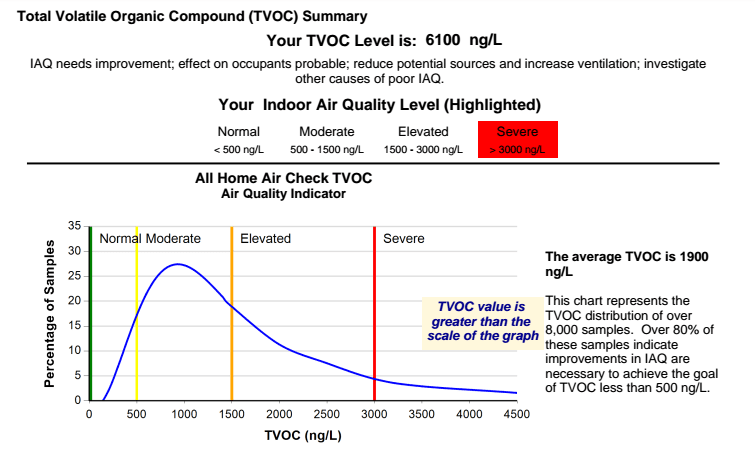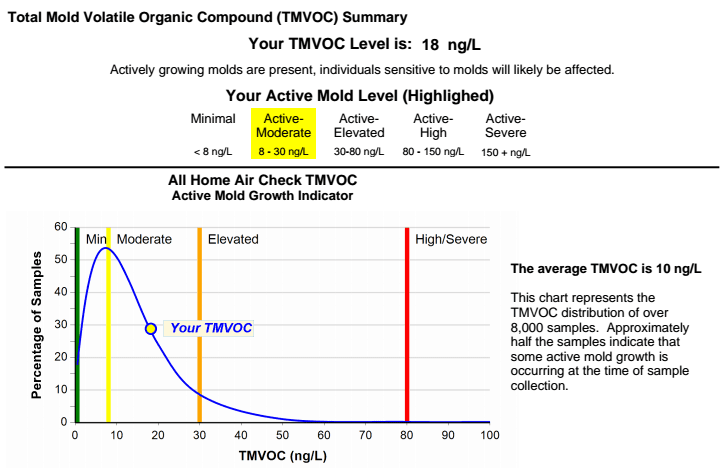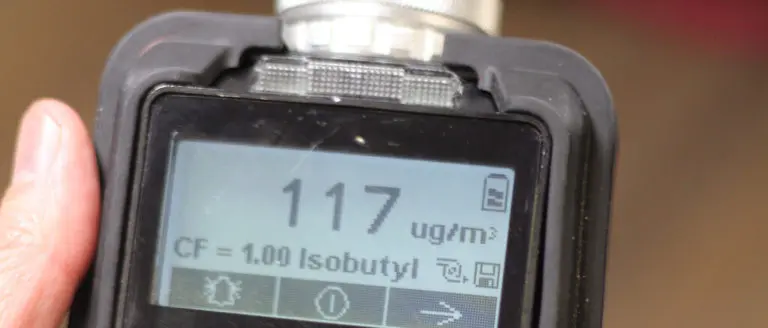If you’ve ever wondered how to test the VOC levels in your home, you’re in the right place. In this article, we’ll guide you through the simple process of testing your VOC levels in the comfort of your own home. Whether you’re concerned about the air quality or just want to ensure the safety of your loved ones, we’ve got you covered. So, let’s get started and discover how easy it is to test your VOC at home!


Understanding VOCs
What are VOCs?
Volatile Organic Compounds (VOCs) are gases that are emitted from various solids and liquids. They are released into the air at room temperature and can come from a wide range of sources, including household products, building materials, and even outdoor pollution. These compounds can have both short-term and long-term health effects when present in high concentrations in indoor environments.
Sources of VOCs
VOCs can originate from numerous everyday items found in our homes. Some common sources include cleaning and personal care products, paints, varnishes, adhesives, carpets, furniture, and even cooking activities. Additionally, VOCs can also be released from tobacco smoke, outdoor air pollutants like vehicle emissions, and certain hobbies such as woodworking or painting.
Health effects of VOCs
Exposure to VOCs can result in a range of health effects. Short-term exposure may cause symptoms like irritation of the eyes, nose, and throat, headaches, dizziness, and nausea. Prolonged or significant exposure to VOCs can lead to more severe health issues, including damage to the central nervous system, liver, and kidneys. In some cases, certain VOCs have been identified as carcinogens and can increase the risk of developing cancer.
Monitoring Indoor Air Quality
Signs of poor indoor air quality
Indoor air quality can significantly impact our overall wellbeing, so it’s crucial to be aware of signs that indicate poor air quality in our homes. Common indicators include a strong and unpleasant odor, persistent symptoms such as coughing or sneezing, increased allergic reactions or asthma attacks, and a buildup of dust or mold. If you notice any of these signs, it may be a good idea to test the VOC levels in your home.
Importance of testing VOC levels
Testing VOC levels is essential for several reasons. Firstly, it allows you to identify the sources of pollutants and take appropriate measures to reduce or eliminate them. Secondly, by understanding the VOC levels in your home, you can assess potential health risks and make informed decisions about necessary preventive measures. Lastly, regular testing can help you monitor the effectiveness of any actions you have taken to improve your indoor air quality.
Common household items releasing VOCs
Numerous household items can release VOCs, contributing to poor indoor air quality. Some of the most common culprits include cleaning supplies, air fresheners, paints, solvents, new furniture or flooring, and even dry-cleaned clothing. It’s important to be mindful of these items and take steps to minimize their impact on your indoor air quality.


Types of VOC Tests
Home air quality test kits
Home air quality test kits offer a convenient and affordable way to test VOC levels in your home. These kits typically come with sampling devices and detailed instructions on how to collect air samples. They often include analysis services to provide you with an accurate assessment of the VOC concentration levels in your indoor environment.
Professional VOC testing services
If you prefer a more comprehensive and expert analysis of your indoor air quality, professional VOC testing services are available. These services involve certified professionals conducting detailed assessments using state-of-the-art equipment. They can provide a comprehensive analysis of VOCs, identify specific sources, and offer suggestions for remediation.
DIY methods for testing VOCs
For those who enjoy working on projects themselves, there are also DIY methods available for testing VOCs. These methods include using canister or passive samplers, gas detectors, and PID (Photoionization Detector) meters. While these options may require more technical knowledge and careful calibration, they offer an affordable alternative to professional services.
Home Air Quality Test Kits
How do home air quality test kits work?
Home air quality test kits generally come with specific instructions, but the basic process involves collecting air samples using provided sampling devices. The kit may include devices to measure specific types of VOCs or a general sampler for a broad analysis. Once the samples are collected, they are typically sent to a laboratory for analysis, and the results are provided to you within a specified timeframe.
Popular home air quality test kits
Several home air quality test kits are popular among consumers. These kits usually provide instructions, sampling devices, and prepaid return packaging for the samples. Some well-known brands in the market include the AirThings Home Radon Detector, the uHoo Indoor Air Quality Sensor, and the Foobot Indoor Air Quality Monitor. It’s important to research and choose a reputable kit that suits your specific needs.
Pros and cons of using home test kits
Using home air quality test kits has its advantages and limitations. On the positive side, these kits are relatively affordable, easy to use, and provide a quick snapshot of the VOC levels in your home. They can help identify potential issues and guide you in taking initial steps to improve indoor air quality. However, these kits may not offer the same level of accuracy and detailed analysis as professional services, and interpretation of results may require some understanding of VOCs.


Professional VOC Testing Services
Benefits of hiring professionals
Opting for professional VOC testing services comes with several advantages. Firstly, certified professionals have the necessary expertise and experience to conduct thorough assessments, ensuring accurate results. They can identify specific VOC sources, offer detailed recommendations for remediation, and provide ongoing monitoring if needed. Additionally, professionals may have access to advanced equipment and analytical techniques that may not be available with home test kits.
What to expect from professional tests
When hiring professionals for VOC testing, you can expect a comprehensive evaluation of your indoor air quality. This assessment may include a combination of air sampling, surface sampling, and an analysis of potential VOC sources. The professionals will collect samples and send them to a certified laboratory for analysis. Once the results are ready, you can expect a detailed report outlining the VOC concentrations, potential health risks, and recommendations for improving air quality.
Cost considerations
The cost of professional VOC testing services can vary depending on factors such as the size of your home, the number of samples collected, and the specific services provided. Generally, you can expect to pay more for a comprehensive assessment that includes multiple samples and a detailed analysis. It’s recommended to obtain quotes from different providers and consider the value of the services offered before making a decision.
DIY Methods for Testing VOCs
Canister or passive samplers
Canister or passive samplers are a popular choice for DIY VOC testing. These devices collect air samples by exposing a sorbent material to the indoor atmosphere for a specific period. The sorbent material absorbs VOCs, and the collected sample can be sent to a laboratory for analysis. While canister or passive samplers may require careful positioning and timing, they offer a cost-effective means of testing VOC levels.
Gas detectors and PID meters
Gas detectors and PID meters (Photoionization Detectors) are handheld devices that can detect and measure VOCs in real-time. Gas detectors are useful for identifying potential VOC sources or areas with high concentrations, while PID meters can offer estimated VOC levels. These tools provide immediate results, but it’s important to note that they may not provide the same level of accuracy as laboratory analysis.
Using DIY air quality monitors
Another option for DIY VOC testing is using air quality monitors. These devices continuously monitor and measure various air quality parameters, including VOCs. They provide real-time data and often connect to smartphone applications, allowing you to track and analyze air quality trends over time. DIY air quality monitors can be a valuable tool for ongoing monitoring and identifying any sudden changes in VOC levels.


Preparing for VOC Tests
Identifying potential VOC sources
Before conducting VOC tests, it’s essential to identify potential sources of VOCs in your home. Take note of items such as cleaning products, paints, adhesives, or furniture that may release VOCs. This awareness will help you focus your testing efforts on areas of concern and take appropriate actions to reduce exposure.
Ventilating your home
Proper ventilation is crucial for maintaining good indoor air quality. Before conducting VOC tests, ensure that your home is well-ventilated by opening windows or using exhaust fans to promote the exchange of indoor and outdoor air. Ventilating your home properly can help reduce the concentration of VOCs and provide a more accurate representation of your typical indoor air quality.
Cleaning and removing VOCs
Cleaning your home can also contribute to reducing VOC levels. Regularly dusting surfaces, vacuuming with HEPA filters, and using green cleaning products can help minimize the presence of VOCs. Additionally, removing or replacing items that contribute significantly to VOC emissions, such as old carpets or furniture, can lead to a healthier indoor environment.
Steps to Test VOC at Home
Choosing the right testing method
When testing VOC at home, it’s important to choose the appropriate method based on your specific needs and budget. Consider factors such as the level of accuracy required, the type of VOCs you want to measure, and whether you prefer a quick snapshot or a comprehensive analysis. Home test kits, professional services, and DIY methods all offer different insights and capabilities, so choose accordingly.
Following the instructions carefully
Regardless of the testing method chosen, it’s crucial to follow the instructions provided. Different testing methods may have specific protocols and guidelines for sample collection and handling. By adhering to the instructions carefully, you can ensure the accuracy of the results and avoid any potential contamination or errors.
Collecting air or surface samples
The process of collecting air or surface samples can vary depending on the testing method. Home test kits typically provide sampling devices to collect air samples in specific areas of your home. Professional services may include a combination of air and surface sampling using specialized equipment. DIY methods may involve positioning samplers strategically or using handheld devices to measure air quality directly. Select the appropriate method and collect samples as instructed to obtain reliable results.


Interpreting VOC Test Results
Understanding the measurement units
VOC test results are typically reported in units such as parts per billion (ppb) or micrograms per cubic meter (µg/m³). It’s essential to understand the measurement units used in the analysis to interpret the results accurately. Reference values and exposure limits set by regulatory agencies can provide guidance on what concentrations are considered safe and within acceptable ranges.
Comparing results with exposure limits
To determine the significance of VOC levels in your home, compare the test results with exposure limits established by regulatory bodies. Different VOCs may have different exposure limits, so it’s important to consider the specific compounds detected. If the test results exceed the recommended exposure limits, it may be necessary to take immediate actions to reduce VOC levels.
Seeking professional help if necessary
If the test results indicate a significant presence of VOCs beyond acceptable limits, it may be wise to seek professional help. Qualified experts can further analyze the results, identify specific sources, and propose effective strategies for minimizing exposure. They can provide valuable guidance on remediation measures to create a healthier indoor environment for you and your family.
Actions to Reduce VOC Exposure
Ventilation and air filtration
One of the most effective ways to reduce VOC exposure is to ensure proper ventilation in your home. Open windows when weather conditions permit and use fans or air purifiers equipped with high-efficiency particulate air (HEPA) filters to improve air circulation. Ventilation helps dilute and remove VOCs, enhancing indoor air quality.
Proper storage and usage of products
Proper storage and usage of products can also help minimize VOC emissions. Ensure that containers are tightly sealed to prevent VOCs from evaporating into the air. When using products that release VOCs, such as paints or solvents, follow manufacturer instructions and use them in well-ventilated areas. Consider alternative low VOC or VOC-free products whenever possible.
Choosing low VOC or VOC-free alternatives
To further reduce VOC exposure, consider choosing low VOC or VOC-free alternatives when purchasing household products. Look for labels indicating low VOC content or eco-friendly certifications. Prioritize products made from natural or organic materials. Switching to these alternatives can significantly contribute to creating a healthier indoor environment with lower VOC levels.
By understanding VOCs, monitoring indoor air quality, and taking proactive steps to reduce exposure, you can create a healthier and safer home environment for yourself and your loved ones. Testing VOC levels allows you to identify potential sources, make informed decisions, and take targeted actions to improve air quality. Whether using home test kits, professional services, or DIY methods, remember that the ultimate goal is to minimize VOCs and create a more enjoyable living space.







